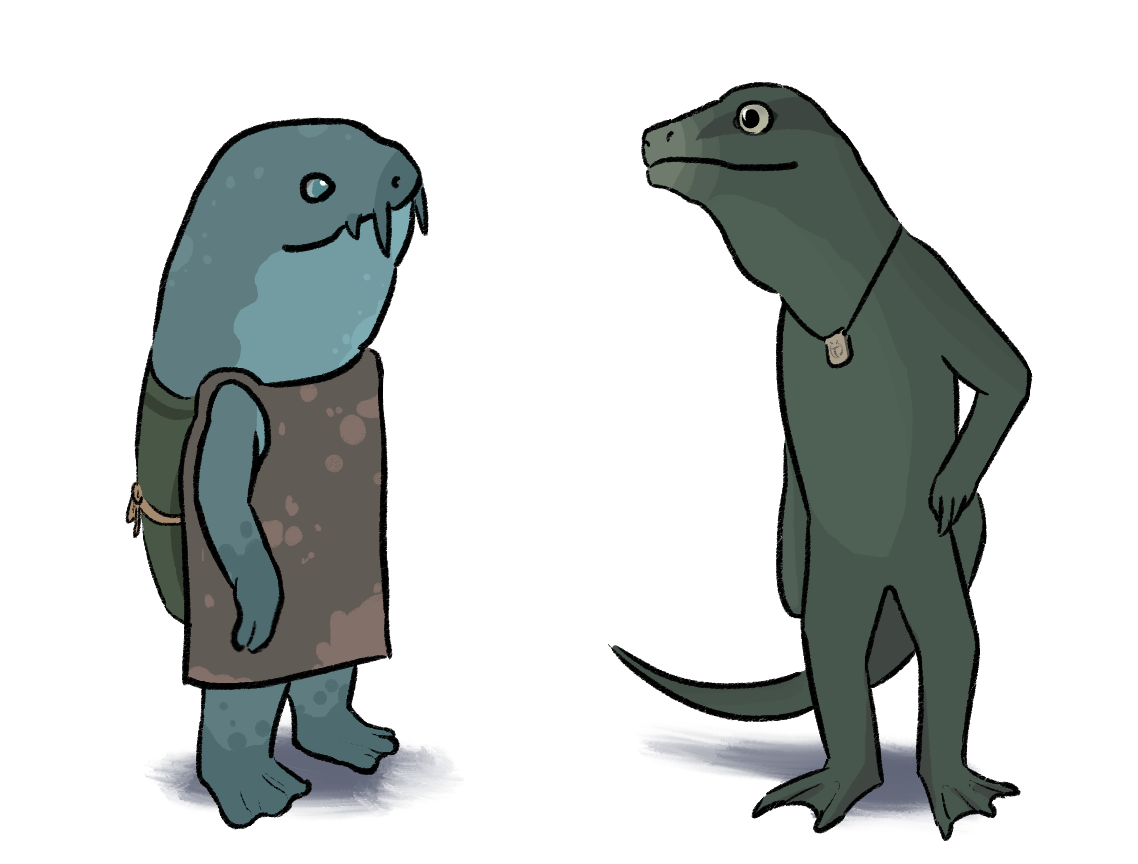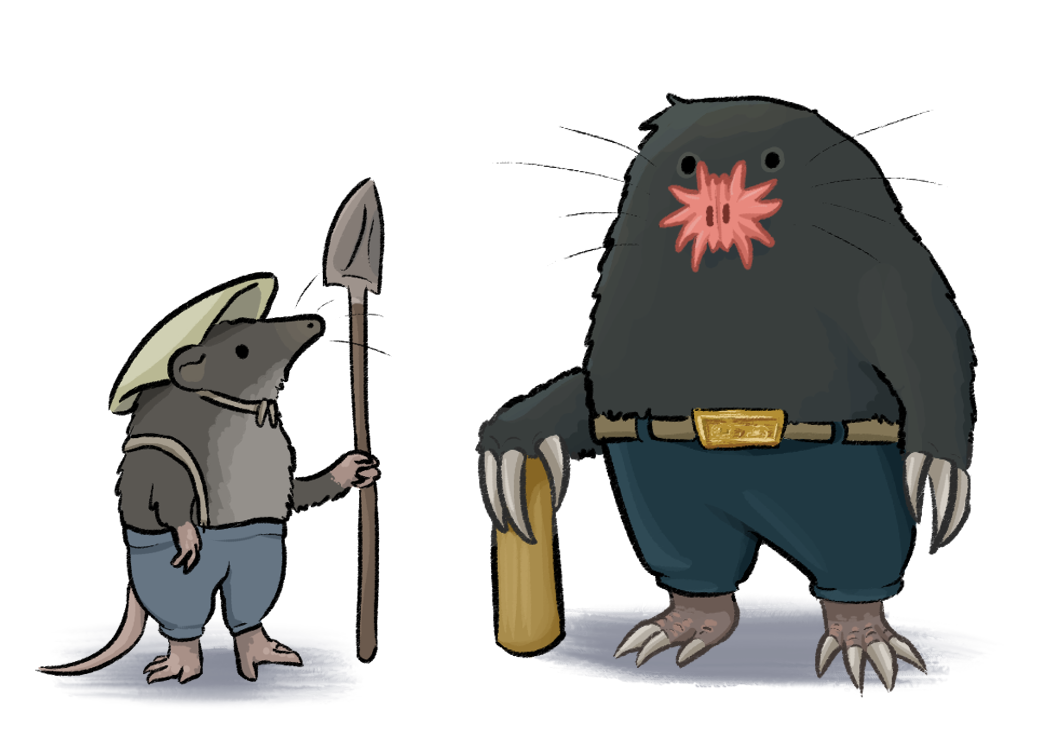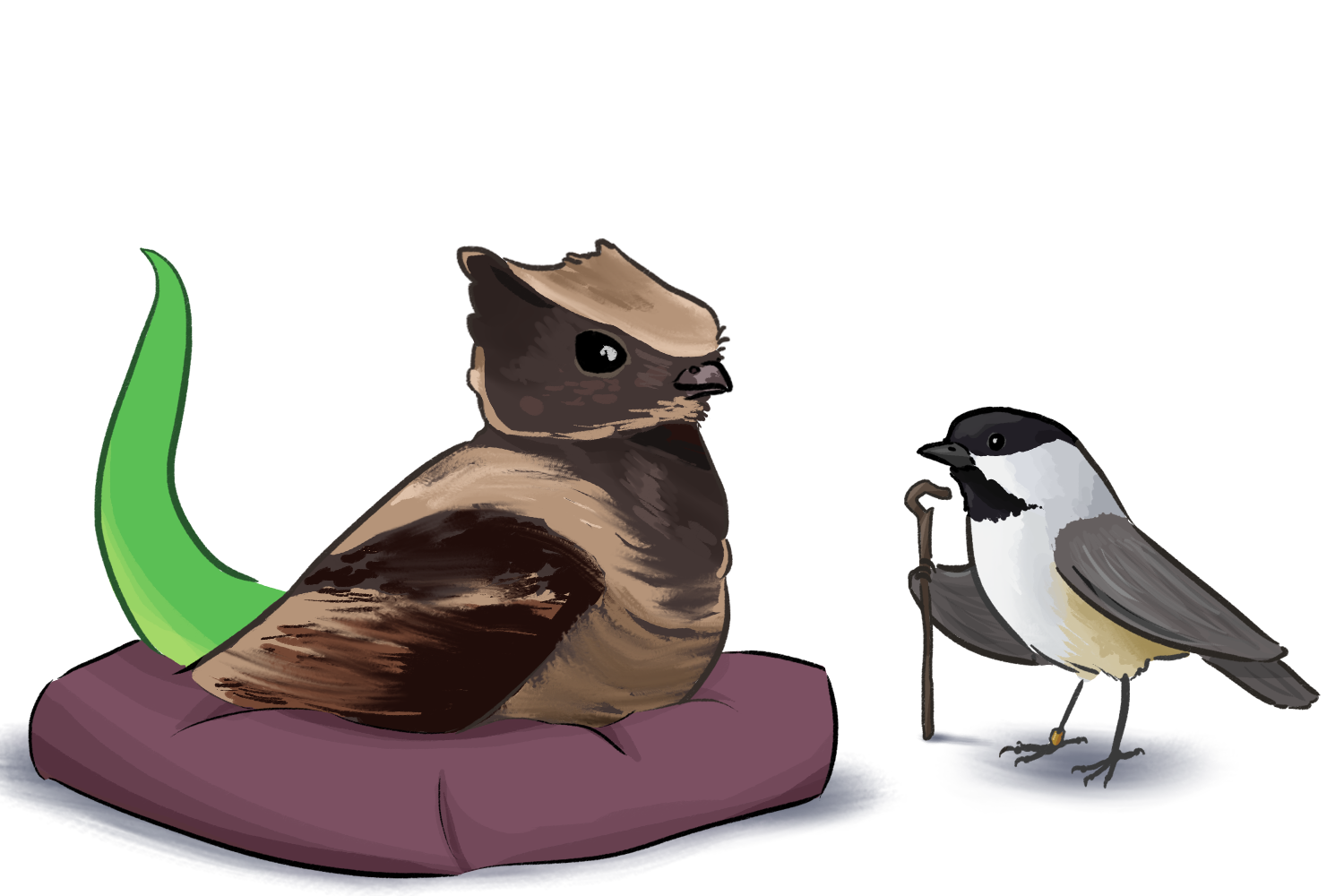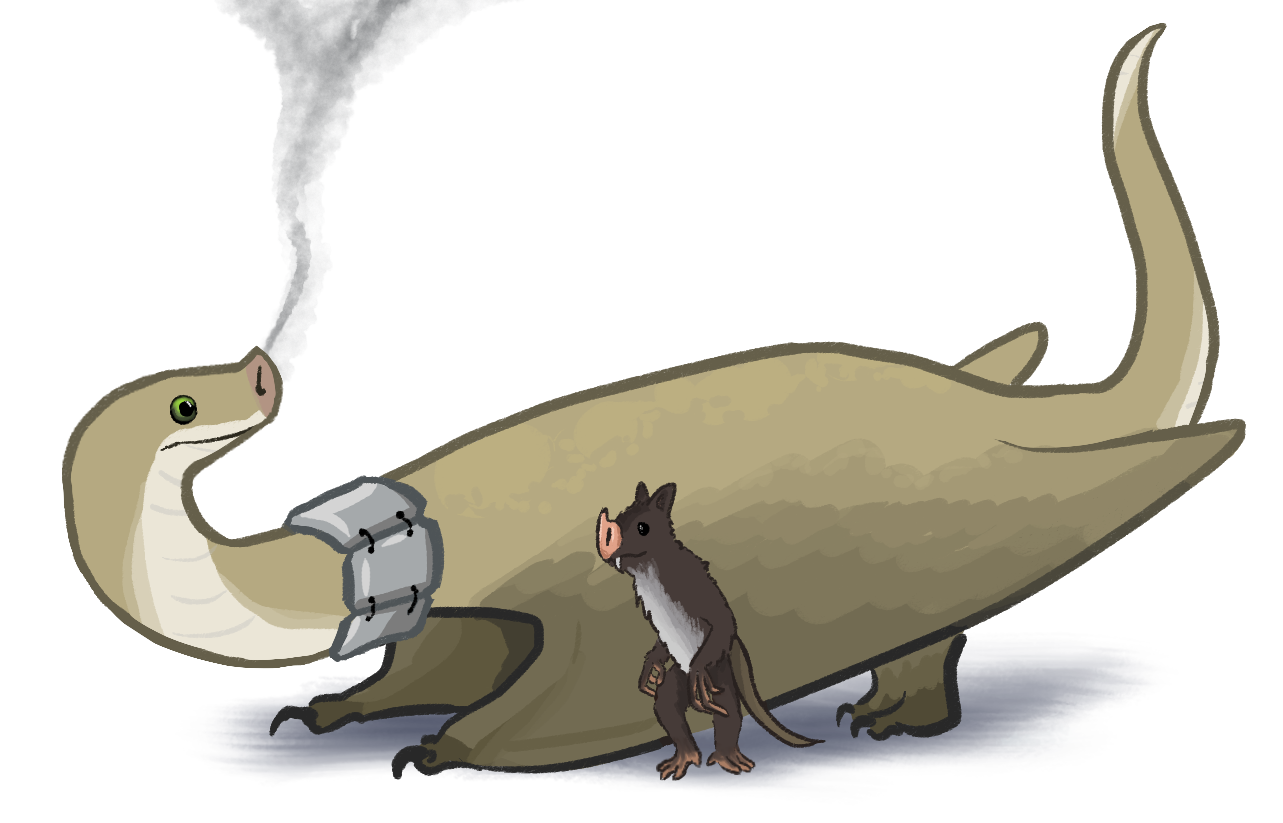An Introduction to Mages
While the machines of the bugkin grow more advanced by the day, the mages of Cordhan are on the tail end of a technological boom. The previous century had brought great improvements to agriculture, metallurgy, and architecture, but recent political tensions between a number of northern kingdoms has slowed trade and left nations apprehensive. Few are willing to fund the research of scholars and wizards in this uncertain time, and people across the continent find themselves wondering what the future holds.
But despite the uncertainty, Cordhan remains a vibrant place. The continent is divided into many kingdoms and nation-states which form a web of shared culture and political history. Like any complex situation, this diversity is commonly simplified into a basic (and somewhat inaccurate) model which sees the mages divided into five types of people: the Pikes, the Dwarves, the Aves, the Dragons, and everyone else.

A pair of friends, from the south (left) and north (right).
Pikes are defined by their fish- and frog-like traits. They tend to have round features and smooth skin, with most having gills and strong swimming skills. Tails are a common trait among children, but most lose them as they grow older. Coloration and patterns are highly variable, with shades of greys, greens, and browns being most common.
Pike society is built around social orders called guilds. Each guild represents a trade or type of work, and possess a complete monopoly over their field. Chapters manage the business operations, membership, and trade within individual states and kingdoms, and cross-chapter rivalries have become common as guild authories weaken. Because pikes typically have a large number of eggs per clutch, parents typically entrust their offspring to other members of their community, who become mentors. Apprentices are expected to learn their trade and serve the guild, while mentors are expected to act as both teachers and parents to their charge. The origin of this practice is attributed to their creation myth, which tells of a distant creator who left behind a nest of eggs which hatched into the first pikes. Each of these children were then raised by a benevolent spirit and granted sacred knowledge of their craft, which they would then pass on to their children, for generation after generation.
Pikes are most common in the south, though communities of pikes are found all along the coast and individuals are present in nearly every city in Cordhan. Along the southern coast, the power of guilds holds great sway, while the monarchs of northern states tend to hold more power. This difference has led to significant cultural divergence between the two, and a not-insignificant amount of political tension. Meanwhile, the pikes of the southern interior remain isolated, with a culture entirely their own. But on the whole, life remains peaceful.

A hill dwarf (left) and a mountain dwarf (right).
Dwarves are defined by mammalian features, with fur being their most distinctive trait. They are divided into two main groups: mountain and hill. Mountain dwarves tend to appear mole-like with large claws and a stocky build, while hill dwarves are more like shrews, being thinner and taller. Star noses are seen as the signature trait of mountain dwarves, though the trait pops up in hill dwarves from time to time. Fur color is restricted to black, white, grey, and various shades of brown.
Like pikes, dwarven culture is also split, but this divide is found within nations more than between them. True to their name, hill dwarves are mostly found in rural areas to the west of the mountains, while mountain dwarves are mostly centered in the underground cities of the east. Because of that, mountain dwarves dominate politics and commerce, while hill dwarves produce the food and raw materials needed for city life. This uneven divide (and all the injustices it brought) has created generations of tension in dwarven society, tension that has overflowed time and again through history. Some hill dwarves have begun to resent that very name, as it situates them as a subtype of the dwarves, which are generally seen as stocky cave-dwellers by outsiders. But other mages rarely understand the complexity of this divide, and thus the name remains.

A aves from the south (left) and from the north (right).
Aves are bird-like, with feathers and beaks being their defining trait. Flight is uncommon but not unheard of, and avian society considers it a treasured gift to those born with it. Aves are exceptionally diverse in terms of appearance and especially color, though they trend towards the small size.
The northern peninsula of Cordhan is dominated by aves, and is currently rather hostile to outsiders. While priestly orders have always held great influence in avian society, the past centuries has seen them rapidly grow in power and influence, far overshadowing the paltry power of the royal family and heavily influencing the cultural landscape. As they became powerful, they became corrupt, and their actions have sowed dissent among everyone from former nobles to other factions of priests. Yet despite their shared cause, their many differences keep them scattered. And while high taxes and lack of trade goods have been harsh on the many farmers and craftsmen of the land, most people still live in relative peace.
At the same time, the centuries of corruption led to many, both noble and commoner, being exiled and forced to find new lives in the south. Some found work in the courts of other kings, while others found new homes in small villages. They brought with them the culture and practices of the north, which have begun to merge with local customs and adapt to the new landscape. Even as the north became more politically isolated, avian culture spread and changed.

A pair of dragon siblings.
But cultural exchange is not the only kind of connection between peoples. All types of mage can produce children together, and said children will show a mix of traits from both parents (though the extent of which varies). However, there is no consensus on how to classify them; sometimes they are lumped in with one of their parent’s type, sometimes they are conceptualized as hybrids, and in special cases they become something of their own. That is the case with the dragons.
Dragons originate with a combination of reptilian and bat-like traits associated with a specific type of gigantism. Because of this, most dragons are quadrupedal and walk on their wings like chiropterans, but in all other respects exhibit incredible variation. Size varies wildly, with some standing only 1 meter tall at the shoulder while others stand over 4 meters. They may exhibit nearly any build, feature, and color (dragons with avian ancestry can be especially brilliant). Not all can fly, but flight is not uncommon.
Dragons are the smallest of the major mage types in terms of population. The western archipelago is home to the largest population of dragons, though many smaller groups live on the mainland. No authority rules more than a single island, and most of the population is split into countless small families that survive by herding and trading. Dragons are occasionally found on the mainland, though many struggle to find work outside of transportation and mercenary business.
But these are not the only types of mages in Cordhan. A wide variety of people who exist outside this model, from the bat-like chiropterans to the lizard-like squamates, are found scattered throughout the continent. While travel to the neighboring continents is rare, visitors from beyond are not unheard of, and they are only becoming more common as sailing technology improves.
But of course, this is not the full story. The land is split into dozens of kingdoms, with their own rulers, populace, conflicts and agendas; for every nation that fits the mold there are two more that break it. Not to mention the deadly wilderness beyond the mountains, where a people unknown to the mages live in secrecy…
---~<*>~--~<*>~---~<*>~---
To return to the Cordhan index, click here.
To return to the homepage, click here.